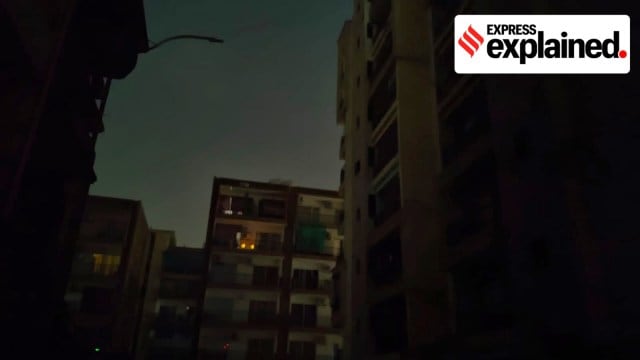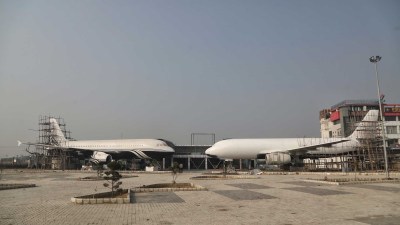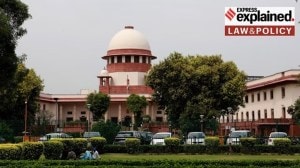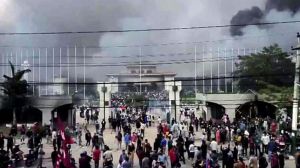Vibha B Madhava is a sub-editor at the news desk for IndianExpress.com. She is interested in writing about gender, culture and politics of ableism. Having specialised in digital journalism, she is keen to explore various forms of interactive, multimedia storytelling. Apart from that, she also likes to experiment with social media. Qualification, Degrees/other achievements: Bachelor's degree in Media and Communication from Manipal Institute of Communication, Manipal Academy of Higher Education. PG Diploma in Integrated Multimedia Journalism from Asian College of Journalism, Chennai. With The Indian Express, this is Vibha's first stint in pursuing journalism in a full-time capacity. Previous internship experience: Deccan Herald, Bengaluru; The News Minute, Bengaluru; The Mojo Story; Radio Indigo 91.9 and Fever FM 94.3 (Hyderabad) You can find her on Twitter as @VibhaBMadhava , on LinkedIn (Vibha B Madhava), or write to her at vibha.madhava@indianexpress.com. ... Read More
Blackouts in over 15 cities amid India-Pakistan tensions: What the measure is, how it can help
Indian City Blackout Guidelines: The aim of a blackout is to protect people and physical infrastructure from enemy aircraft at night, “without incurring the discomfort of total darkness”.
 View of a housing society during the blackout in Mohali on Thursday, May 8, 2025. (Express photo by Jasbir Malhi)
View of a housing society during the blackout in Mohali on Thursday, May 8, 2025. (Express photo by Jasbir Malhi)Indian City Blackout Measures: Amid the ongoing India-Pakistan tensions, Thursday night (May 8) saw blackouts in over 15 cities in India – from Srinagar to Chandigarh to Bhuj.
The measure kicked in as Indian armed forces began a counter-offensive against Pakistani drones and missiles, which attempted to target Indian military facilities along the western and northern frontiers.
In this context, a blackout is when all lights are turned off or restricted in a given area. How exactly do they help a civilian population, and what exactly happens when blackouts are in effect? We explain.
What is meant by blackout measures in the event of an attack?
Such measures ensure the elimination of all light sources visible from the open air. They are part of lighting restrictions and primarily meant to help strengthen civil defence mechanisms, which is the preliminary line of defence of the citizens, by the citizens.
Blackout trials were also part of the mock drills conducted on May 7 in 244 civil defence districts as part of India’s strategy to ensure citizens are armed with the knowledge of what to do in case of attacks against India.
A 2003 order of the Directorate General Civil Defence (under the Union Home Ministry), titled “General Principles of Civil Defence in India”, explains that “Lighting restrictions are an important feature of precautionary measures to be taken as a form of security against air attack.”
No light should be visible at a height of 5,000 feet above ground level under normal visibility conditions, the document says.
How exactly do blackouts help?
The aim is to enable people to protect themselves and physical infrastructure from enemy aircraft at night, “without incurring the discomfort of total darkness”. Blackouts make locking ground targets difficult for advanced high-speed aircraft.
The order further read: “The anxiety level of the enemy pilot in the cockpit would be more if the area is dark. This holds even with significant changes in the threat perception and technological advancement over time.”
How are lighting restrictions to be imposed?
The order states that it is not practical for all lighting restrictions to be imposed all at once. The best approach is to do so in gradual stages, so that civilians can carry out their normal activities with “less and less light”. These include street lights, those in buildings and vehicles, and larger complexes.
For example, for street lights:
*The number of street lights should be reduced to the absolute minimum.
*The power of the remaining lights is to be reduced as far as possible, ensuring that no light is reflected on the ground.
In the case of buildings, or open ground, “The total light reaching the outside of the building in any place is not greater than that thrown on the ground by a 25 watt bulb at a distance of 20 ft. or an ordinary hurricane lantern held at a distance of 6 ft,” the order reads.
And what is a ‘crash blackout’?
A ‘crash blackout’ is applicable to factories and commercial premises in case of an air raid warning.
The purpose is to prevent conspicuous buildings from being picked out at night as targets for an air attack. It is also aimed at depriving an easy means of checking geographical positions. This makes it a protection measure for not just these larger premises, but also for the entire neighbourhood.
Auxiliary or supplementary lighting, if used, should be provided from another source rather than the main electric supply of the commercial building. Batteries or a small petrol-driven generator are considered suitable in such cases.


- 01
- 02
- 03
- 04
- 05






































